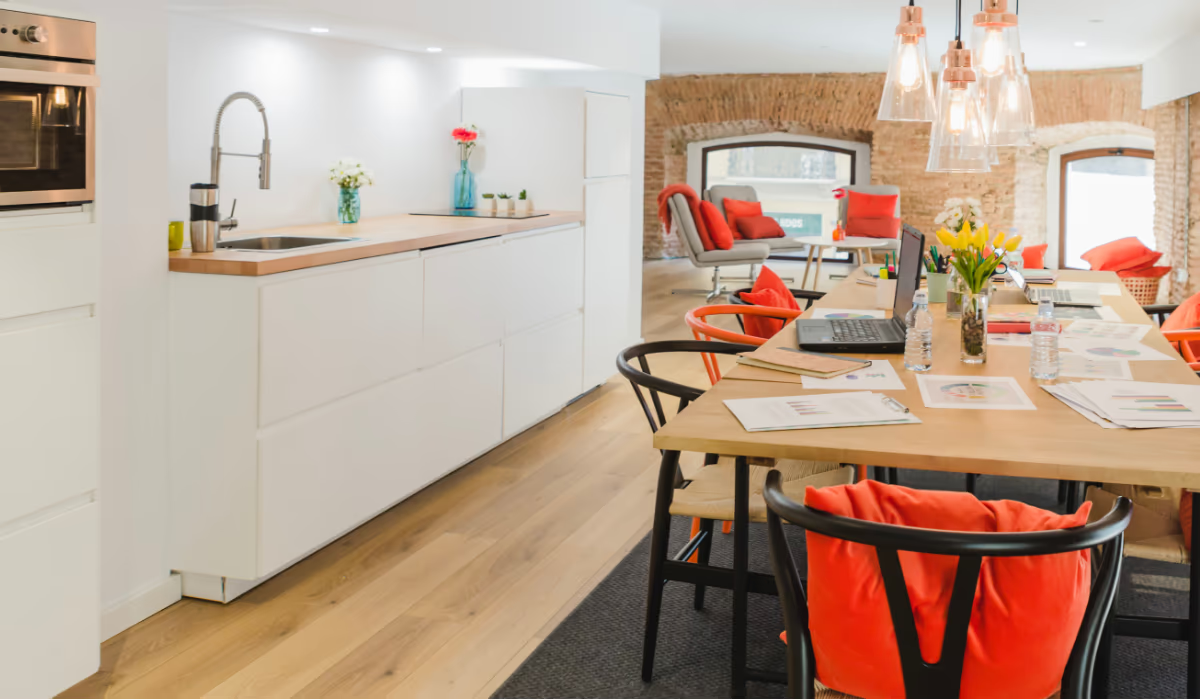Undertaking a kitchen remodel is exciting, but without the right knowledge, it can quickly become stressful. Many homeowners begin with big dreams—beautiful cabinetry, sleek countertops, stylish lighting—but they find surprises at every turn. With hindsight, here are important lessons people learn too late when they remodel kitchen spaces: lessons about budget, timing, structural realities, design choices, and everyday usability. Knowing these ahead of time helps the process feel more controlled, less chaotic.
Layout & Workflow Matter More Than Looks
One of the biggest regrets is choosing a pretty layout that doesn’t work in practice. The “work triangle”—sink, stove, fridge—needs to be functional so you don’t bump into people or struggle carrying hot items. It’s easy to focus on how your kitchen will look in photos, forgetting how people will move around in it day after day. Also, more counter space matters more than flashy cabinetry or fixtures, especially around problem spots like beside the stove or sink.
Hidden Costs & Structural Surprises
After demolition, people often see things they didn’t expect: uneven floors, outdated wiring, plumbing that doesn’t meet current codes, or walls that aren’t square. These surprises add cost and delay. It helps to budget extra (10-20% or more) for things you can’t foresee. Also, older homes may require upgraded plumbing, electrical systems, or structural reinforcement — all before the finishing touches can even begin.
Appliances, Lighting & Outlets: Think Ahead
Choosing appliances is more than style—it influences layout, ventilation, power requirements, and cabinetry design. A big range hood or a heavier oven might need stronger supports or special wiring. Lighting often gets treated as an afterthought; people regret when areas are left too dim or when they forgot to add task lights under cabinets. Outlet placement is also crucial—if you later find that your countertop lacks near enough plugs for daily tools, you’ll be frustrated. Planning where you will use small appliances and lighting early avoids many regrets.
Materials & Finishes: Taste, Durability & Maintenance
When picking finishes, what looks good initially may be harder to live with. Glossy surfaces show fingerprints and scratches. Light colors stain or discolor. Some countertop materials may look beautiful but chip or stain easily. Cabinet hardware, paint type, finishes (matte vs gloss), and protective coatings can make a big difference in long-term satisfaction. It helps to touch, test, and even live with sample pieces if possible before fully committing.
Timeline, Disruption & Where You’ll Cook
One thing many don’t widely consider is how disruptive the remodel will be. Kitchen renovation often means you won’t have a working kitchen for weeks. Planning a temporary cook setup (microwave, portable stove, eating outside, etc.) helps reduce frustration. Also expect delays — delivery of materials, unexpected inspections, or waiting for contractors are typical. Be mentally ready for mess, dust, and staging chaos during the middle of the project.
Working with Contractors & Decision Fatigue
Another thing people wish they knew sooner is how important clear, frequent communication with contractors is. Miscommunications lead to mistakes in placement, finishing, or hardware. And decision fatigue is real — making dozens of small decisions adds up. Pace your decision-making so decisions feel considered, not rushed. Also get multiple quotes, check references, and review portfolios so you trust the contractor’s quality and timeline.
Conclusion
Renovating the kitchen is a big investment—not just of money, but time, attention, and patience. With better planning around layout, appliance selection, finishes, and what might be hiding behind walls, many of the common regrets can be avoided. When you accept that surprises happen, budget for them, and stay intentional about workflow and functionality, the end result is more likely to be beautiful and usable.
FAQs
How much extra budget should I set aside for a kitchen renovation?
A good rule is to allocate around 10-20% extra above your initial estimates. That covers structural surprises, material delays, or upgrades you didn’t foresee.
How long does a full kitchen remodel usually take?
Depends on size, complexity, how many systems you are changing (plumbing, wiring, walls). Small remodels might finish in a few weeks; full overhauls often take 6-8 weeks or more.
Can I reuse any parts of the old kitchen to save money?
Yes. Keeping layouts, reusing cabinets that are still in good condition, or avoiding moving plumbing/appliance zones helps save cost. Salvaging fixtures or hardware can also help.
What mistakes should I try to avoid with appliances?
Don’t underestimate power needs or ventilation requirements. Confirm clearances (for doors/openings), make sure outlets are in usable places, and match the appliance size to the space available (not just physical size, but how the door swings, how people move around it).
Which material choices tend to cause regret later?
Very trend-forward finishes, cheap hardware, overly glossy surfaces, light colors that stain easily, and materials that require high maintenance or special care. Choosing durable, slightly more neutral or timeless options tends to age better.







